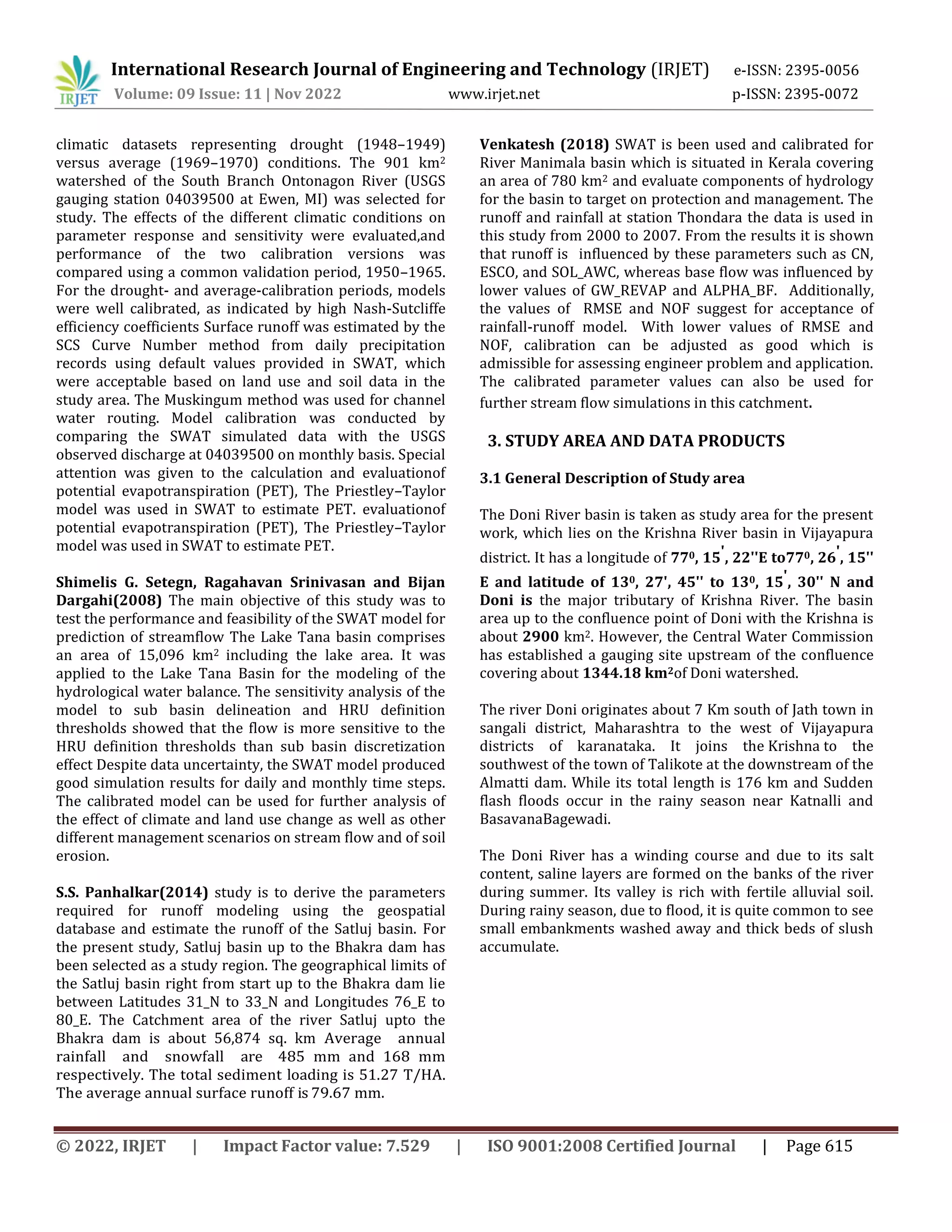This document describes using the Soil and Water Assessment Tool (SWAT) model to simulate hydrological and water quality parameters of the Doni River Basin in India over a 20-year period from 1998-2018. The key points are:
- The basin was divided into 7 sub-basins and 15 hydrologic response units. Land use is mainly agricultural (over 85% coverage).
- Model calibration and validation at a gauging site showed good performance, with Nash-Sutcliffe Efficiency values of 0.71 for calibration and 0.78 for validation.
- Modeling results found average annual evapotranspiration of 195 mm and potential evapotranspiration of 402mm. Sediment yield











